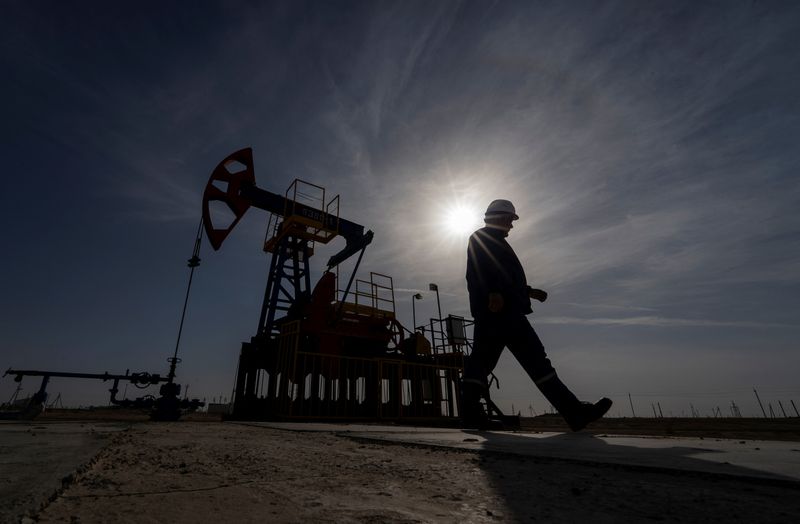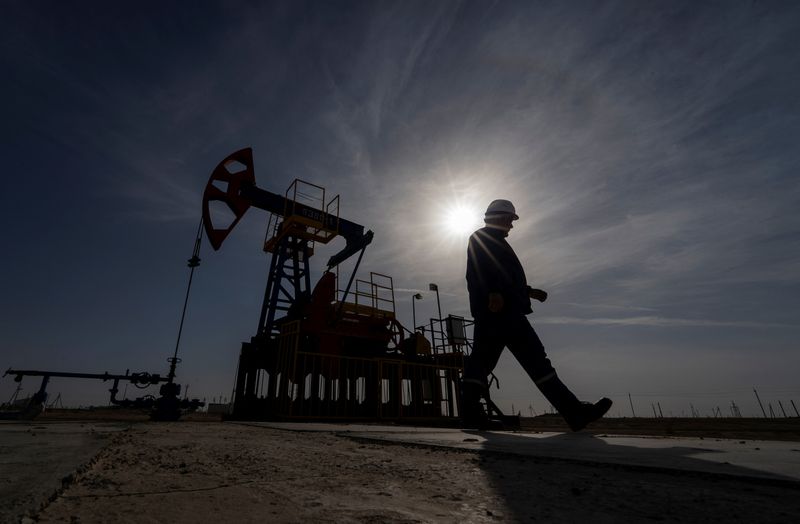
SINGAPORE (Reuters) – Oil prices were little changed on Wednesday, after falling the previous day, as a dip in U.S. crude stockpiles and expectations of supply disruptions from sanctions on Russian tankers lent support amid forecasts for lower global fuel demand.
Brent crude futures were up 2 cents to $79.94 a barrel by 0205 GMT, after dropping 1.4% in the previous session. U.S. West Texas Intermediate crude rose 12 cents, or 0.15%, to $77.62 a barrel after a 1.6% drop.
Prices slipped on Tuesday after the U.S. Energy Information Administration predicted oil will be under pressure over the next two years as supply should outpace demand.
However, the market found support on Wednesday from a drop in crude stockpiles in the U.S., the world’s biggest oil consumer, reported by the American Petroleum Institute late on Tuesday and the expectations for supply disruptions after the U.S. Treasury Department imposed sanctions Russian oil producers and its so-called shadow fleet of tankers.
“Oil prices are trading firmer in early morning trading in Asia today after API numbers showed that U.S. crude oil inventories fell more than expected over the last week,” said ING analysts.
The analysts added that while crude oil stocks in the country’s flagship storage hub Cushing, Oklahoma, increased by 600,000 barrels, inventories are still historically low. Cushing in the delivery location for WTI futures contracts.
The API reported U.S. crude oil stocks fell by 2.6 million barrels in the week ended Jan. 10, according to market sources citing the API figures. They added that gasoline inventories rose by 5.4 million barrels while distillate stocks climbed by 4.88 million barrels.
A Reuters poll showed that U.S. crude oil stockpiles fell by about 1 million barrels in the week to Jan. 10, ahead of an upcoming report from the Energy Information Administration, the statistical arm of the U.S. Department of Energy, at 10:30 a.m. EST (1530 GMT) on Wednesday.

In its report, the EIA expects Brent prices to fall 8% to average $74 a barrel in 2025, then fall further to $66 a barrel in 2026, while WTI will average $70 in 2025 and fall to $62 next year.
Global demand is expected to average 104.1 million barrels per day in 2025, down from the prior estimate of 104.3 million bpd, the EIA said. That would be less than its supply forecast for oil and liquid fuel production to average 104.4 million bpd in 2025.
This post is originally published on INVESTING.



